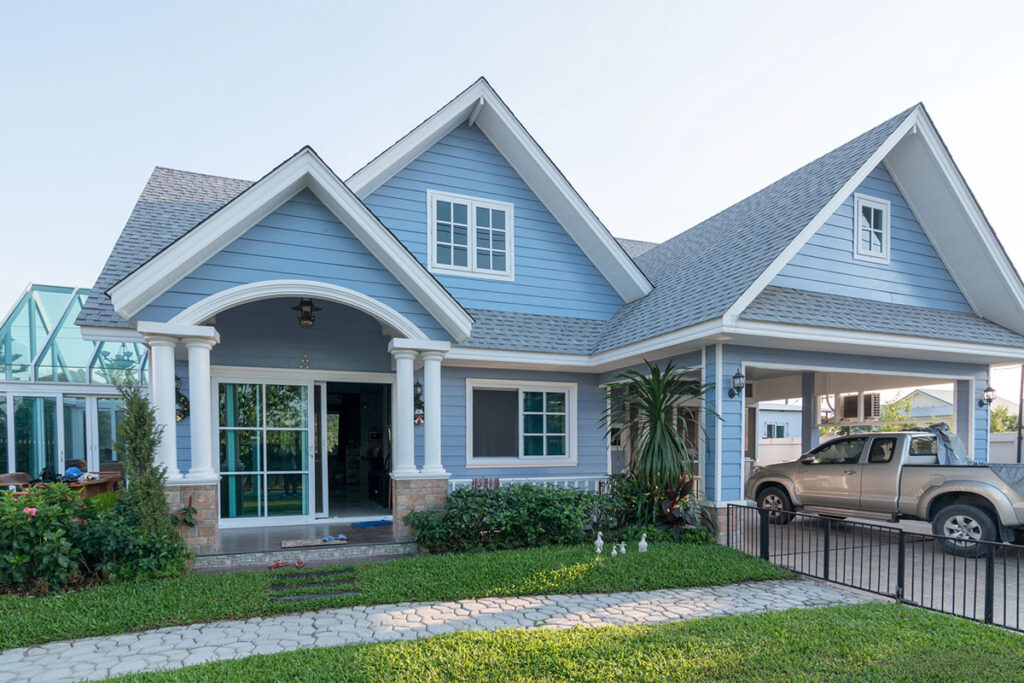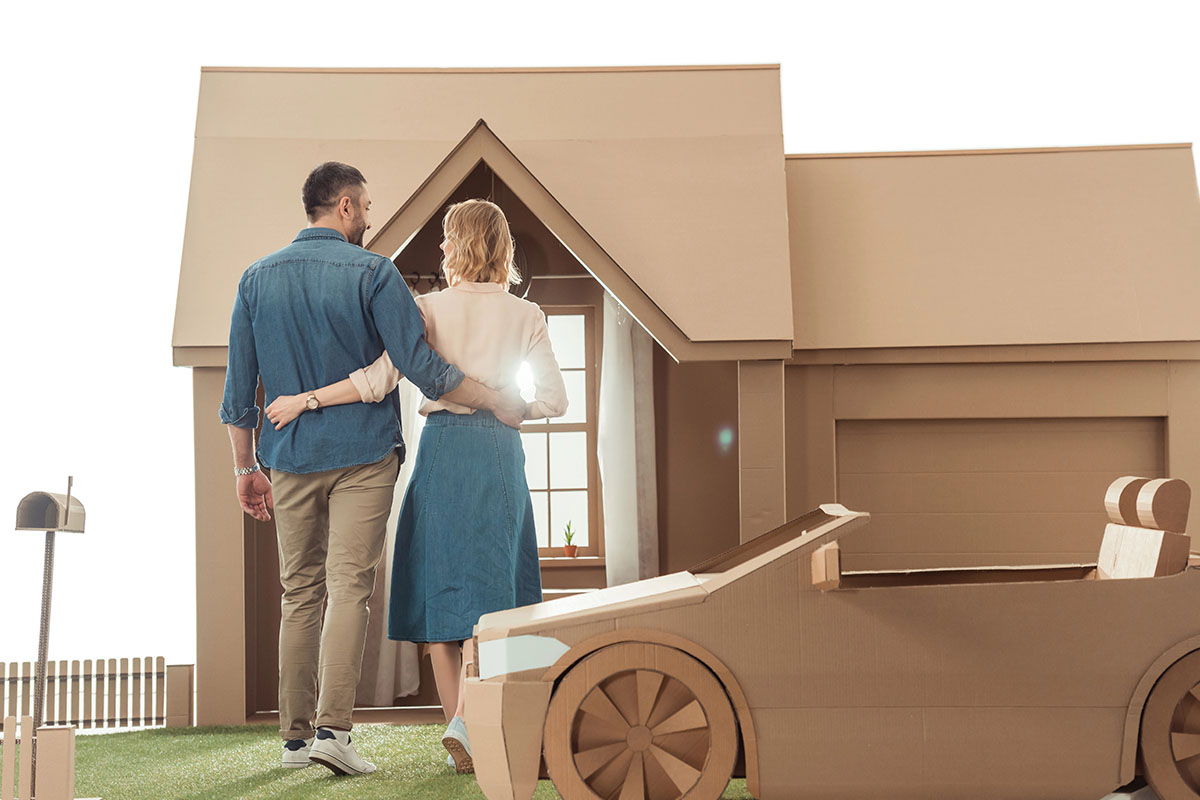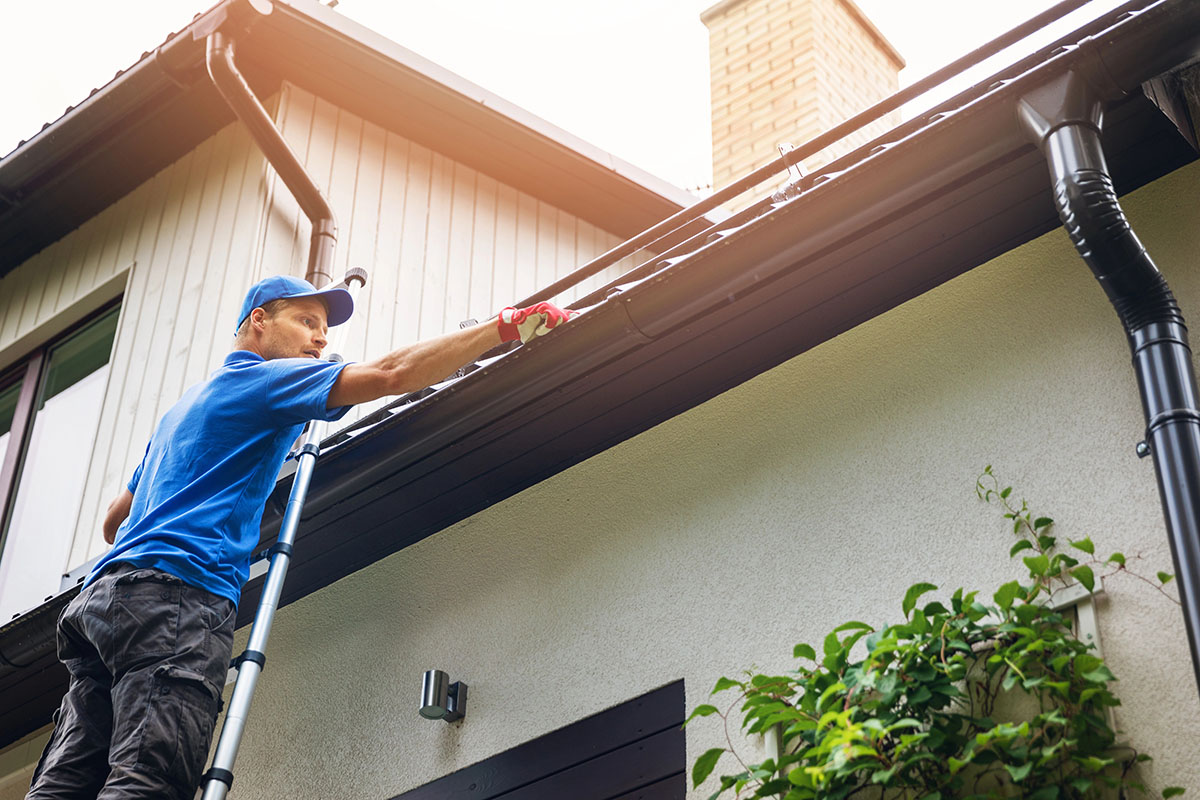Texas summers can be extremely hot, with temperatures exceeding 100°F for over a hundred days in some areas. This heat not only affects our comfort but also leads to higher energy consumption and costs. To cope with the Texas heat and keep cooling expenses under control, it’s essential to invest in energy-efficient home upgrades for your Bastrop home realty.
Below, we’ll discuss effective strategies to beat the heat, improve your home’s comfort, and reduce energy bills. See how you can transform your home into a cool retreat from the scorching Texas sun with these tips from your trusted Bastrop real estate agents.
The Texas Climate Challenge
Surviving the extreme summer heat requires strategic measures to ensure both comfort and cost-effectiveness. With over 100 days of temperatures surpassing 100°F, residents face a unique climate challenge that demands innovative solutions. The scorching heat not only tests endurance but also amplifies the need for efficient cooling strategies within homes.
1. Attic Insulation Improvements
Attic insulation is vital for keeping your home cool during the hot summers. It acts as a barrier to heat, reducing the temperature in your attic by up to 30°F. This not only makes your indoor space more comfortable but also puts less pressure on your air conditioning system, potentially saving you money on energy bills.
Comparison of Insulation Types:
- Blown-In Cellulose: Made from recycled paper products treated for fire resistance, it offers excellent thermal performance and is eco-friendly.
- Fiberglass Insulation: Composed of fine glass fibers, it’s cost-effective and widely used for its insulating properties.
- Spray Foam Insulation: Known for its superior air-sealing capabilities and high R-values, spray foam provides exceptional thermal resistance.
Each type of insulation has its own benefits and things to consider. Blown-in cellulose is praised for being sustainable and providing efficient coverage, while fiberglass insulation is affordable and easy to install. On the other hand, spray foam insulation stands out for effectively sealing air leaks and providing high R-values.
2. Window Treatments to Block Heat Gain
Reflective window films provide a powerful defense against sun exposure, blocking up to 80% of solar heat and 99% of harmful UV rays. These films reduce the amount of heat entering your home, helping maintain cooler indoor temperatures without overburdening your air conditioning system.
Types of window films suited for Texas sun protection include:
- Metalized films: Use microscopic metal particles to reflect infrared light and heat.
- Ceramic films: Non-metallic, highly durable, offering excellent heat rejection without interfering with electronic signals.
- Dyed films: Absorb solar energy but may fade over time; less effective than metalized or ceramic options.
In addition to cutting energy consumption, reflective window films protect furnishings and flooring from sun damage caused by UV exposure. They also reduce glare, enhancing comfort inside your home during peak daylight hours.
3. Roofing Solutions for Heat Reduction
Reflective Roofing Materials
Reflective or cool roofing materials can lower roof surface temperatures by up to 50°F. These materials are designed to reflect sunlight and heat away from the house, reducing the amount of heat absorbed by the roof.
Energy Efficiency Impact
Investing in reflective roofing can contribute to overall energy efficiency improvements in your home. By reducing the heat load on your home, these roofing solutions can work in conjunction with other upgrades like attic insulation and window treatments to create a more comfortable and cost-effective living space.
4. HVAC System Upgrades and Smart Controls
Upgrading your HVAC system and incorporating smart controls can improve your home’s energy efficiency and reduce cooling costs during hot summers.
Upgrade to High-SEER AC Units
One of the most effective ways to enhance your cooling system’s efficiency is by upgrading to high-SEER (Seasonal Energy Efficiency Ratio) AC units. Look for ENERGY STAR certified units with a SEER rating of 16 or higher. These units consume less energy while providing the same level of cooling comfort.
- Energy Savings: High-SEER AC units can save you up to 20% on your cooling energy bills compared to older, less efficient models.
- Rebates and Incentives: In Texas, you may be eligible for rebates and incentives when upgrading to high-SEER AC units. Check with your local utility company or energy program for more information.
Embrace Smart Thermostats
In addition to upgrading your AC unit, consider installing smart thermostats such as Google Nest or ecobee. These devices offer advanced features that can help optimize your cooling schedule and reduce energy consumption.
- Programmable Settings: Smart thermostats allow you to set specific temperature schedules based on your daily routine. This means you can avoid unnecessary cooling when you’re not at home or during sleeping hours.
- Remote Control: With smart thermostats, you can control your home’s temperature remotely using your smartphone. This feature comes in handy when you want to adjust while away or ensure comfort before arriving home.
5. Sealing Air Leaks and Improving Home Envelope
During summer, it’s integral to keep your home properly sealed to prevent hot air from entering and cool air from escaping. One effective way to achieve this is by sealing gaps around doors, windows, and electrical outlets using weather stripping and spray/injection foam.
Benefits of Sealing Air Leaks
- Reduced Hot Air Infiltration: By sealing these gaps, you can reduce the amount of hot air that infiltrates your home, keeping it cooler and more comfortable.
- Improved Energy Efficiency: When your home is properly sealed, your cooling system doesn’t have to work as hard to maintain a comfortable temperature. This leads to improved energy efficiency and lower cooling costs.
- Enhanced Comfort: With less hot air entering your home, you’ll experience a more consistent and comfortable indoor temperature throughout the day.
Affordable Cooling Habits & Supplemental Solutions
1. Ceiling Fans & Cross-Ventilation Techniques
Implementing affordable cooling habits and supplemental solutions can improve indoor comfort without a substantial increase in energy consumption. Here are some effective strategies to beat the heat:
- Ceiling Fans in Summer: Utilize ceiling fans in the counterclockwise direction during summer months to create a wind chill effect in your home. This simple adjustment can make the room feel cooler without lowering the thermostat.
- Cross-Ventilation Techniques: Opening windows strategically during cooler hours, such as early morning or late evening, can facilitate cross-ventilation. This natural airflow helps circulate fresh air throughout the house, reducing the reliance on air conditioning systems.
- Avoid Peak Heat Appliances: During the hottest parts of the day, it’s advisable to avoid using heat-generating appliances like ovens, stoves, and dryers. These appliances can contribute to indoor heat buildup, making it harder to maintain a comfortable temperature.
Implementing these cooling habits not only reduces energy consumption but also enhances overall comfort levels within your home. By combining these practices with energy-efficient upgrades like attic insulation and window treatments, you can create a more sustainable and cost-effective cooling solution for your home.
2. Lighting & Interior Design Adjustments
Adopting affordable cooling habits and utilizing supplemental solutions enhances the effectiveness of energy-efficient upgrades during summer.
Switch to LED bulbs
LED lighting generates less heat compared to incandescent or halogen bulbs, helping keep rooms cooler. They also cut electricity use for lighting by up to 75%, directly lowering cooling demands.
Use light-colored decor and paint
Light colors reflect rather than absorb sunlight, reducing heat buildup inside your home. Walls, ceilings, and floors painted or decorated in light hues contribute to a cooler indoor environment.
Window coverings: thermal curtains and cellular shades
These treatments block solar heat and UV rays before they penetrate living spaces. Cellular shades trap hot air in their honeycomb structure, creating an insulating barrier that maintains cooler indoor temperatures.
Utilize natural shade strategically
Planting fast-growing trees or shrubs on west-facing walls provides natural shade during late afternoon when solar intensity peaks. Temporary outdoor solutions like awnings or shade sails over windows reduce direct sunlight exposure.
Limit use of heat-generating appliances during peak heat hours
Avoid running ovens, dishwashers, or dryers in the afternoon when outdoor temperatures are highest. Shift chores to early morning or evening to minimize added indoor heat load.
Financial Incentives & Increasing Home Value Through Energy Efficiency
Rebates, Tax Credits & Incentive Programs in Texas
In Texas, there are various programs and incentives aimed at encouraging homeowners to invest in energy-efficient upgrades. Here are some key points to consider:
- ENERGY STAR Rebate Finder: This tool allows you to search for rebates and incentives offered by ENERGY STAR partners in your area. It can help you find opportunities to save on energy-efficient products and services.
- Database of State Incentives for Renewables & Efficiency (DSIRE): DSIRE is a comprehensive source of information on state, local, utility, and federal incentives that promote renewable energy and energy efficiency. You can explore available programs tailored to Texas residents.
- Federal Tax Credits: The federal government offers tax credits for certain energy-efficient home improvements. These credits can help offset the cost of upgrades such as insulation, roofing, windows, and HVAC systems.
- Inflation Reduction Act: This act provides tax credits for energy-efficient improvements that help reduce a home’s energy consumption. It’s worth exploring how this legislation can benefit your investment in sustainable upgrades.
- Local Utility Programs: Entities like CPS Energy and Bandera Electric Cooperative offer specific rebates and incentives for energy efficiency projects. Check their websites for details on how you can save money while making your home more sustainable.
- Energy Audits: Many programs include free or discounted energy audits to help homeowners identify areas where they can improve efficiency. Taking advantage of these audits can lead to cost-effective home improvements tailored to your property’s needs.
2. Impact on Property Value & Certifications
There are financial incentives available for homeowners looking to invest in energy-efficient upgrades. These incentives can have a positive impact on property value.
1. ENERGY STAR Rebate Finder
The Database of State Incentives for Renewables & Efficiency (DSIRE) provides information on federal tax credits and incentives like the Inflation Reduction Act.
2. Local Utility Programs
CPS Energy and Bandera Electric Cooperative offer energy efficiency rebates and tax incentives in the Bandera area and Hill Country regions.
3. Property Value Boost
Energy-efficient upgrades not only lower bills but can also increase home value and appeal to buyers or renters.
4. Certifications & Rebates
Qualifying for green certifications through energy-efficient upgrades can lead to additional rebates, financing options, and even tax credits.
5. Cost-Effective Home Improvements
Investing in energy-efficient upgrades is a smart choice for long-term savings and a more sustainable environment.
Your Cooler Home Awaits: Invest in Comfort, Reap the Savings
Surviving Texas summers requires affordable cooling solutions and energy-smart home upgrades that are designed to tackle specific climate challenges. By looking into local rebate programs, you can significantly reduce the initial costs, making these improvements more affordable.
Consider these key actions to maximize benefits:
- Take advantage of utility rebates and tax incentives available across Texas.
- Invest in strategic upgrades such as attic insulation, high-SEER HVAC systems, and reflective roofing.
- Maintain your HVAC system regularly to sustain peak efficiency and indoor air quality.
- Implement smart cooling habits alongside physical upgrades for optimal results.
Your home becomes not only a shelter from extreme heat but also an investment that pays off through reduced energy bills and increased property value. Embracing these practices shows a wise way to survive Texas summers—combining comfort, cost savings, and environmental responsibility. Plus, your improvements can make your house stand out amongst homes for sale in Bastrop TX when you decide to sell.
FAQs
What are the most effective energy-efficient home upgrades to survive Texas summers?
Key energy-efficient upgrades include improving attic insulation with blown-in cellulose, fiberglass, or spray foam; installing reflective window films to block up to 80% of solar heat and 99% of UV rays; using reflective or cool roofing materials to reduce roof surface temperatures by up to 50°F; upgrading to high-SEER (≥16) ENERGY STAR certified AC units; implementing smart thermostats like Google Nest or ecobee; and sealing air leaks around doors, windows, and electrical outlets.
How does attic insulation help reduce cooling costs during hot Texas summers?
Attic insulation acts as a thermal barrier that can reduce attic temperatures by up to 30°F, preventing excessive heat from entering living spaces. Using blown-in cellulose, fiberglass, or spray foam insulation in attics and walls improves energy efficiency, enhances indoor comfort, and lowers cooling costs during prolonged periods of extreme heat common in Texas.
What role do window treatments play in blocking heat gain in Texas homes?
Reflective window films are highly effective treatments that can block up to 80% of solar heat and 99% of harmful UV rays. Installing these films helps reduce indoor temperatures, protects furnishings from sun damage, and lowers reliance on air conditioning systems, resulting in energy savings during the intense Texas sun exposure.
Are there financial incentives available for energy-efficient home upgrades in Texas?
Yes, homeowners in Texas can take advantage of various rebates, tax credits, and incentive programs such as those offered by CPS Energy, Bandera Electric Cooperative, and through federal initiatives like the Inflation Reduction Act. The Database of State Incentives for Renewables & Efficiency (DSIRE) provides comprehensive information on these opportunities to help offset the cost of energy-efficient improvements.
How can HVAC system upgrades contribute to energy savings during Texas summers?
Upgrading to high-SEER (≥16) ENERGY STAR certified air conditioning units improves cooling efficiency and reduces electricity consumption. Installing smart thermostats enables programmable settings and remote control features that can lower cooling costs by up to 15%, optimizing comfort while conserving energy throughout the hot season.
What affordable cooling habits complement energy-efficient home upgrades for surviving Texas heat?
Simple practices like using ceiling fans set to counterclockwise direction to enhance wind chill effect, employing cross-ventilation techniques by opening windows during cooler hours, avoiding the use of heat-generating appliances during peak daytime heat, and making lighting and interior design adjustments all supplement energy-efficient home improvements. These habits contribute to optimal comfort and further reduce cooling expenses during scorching Texas summers.




